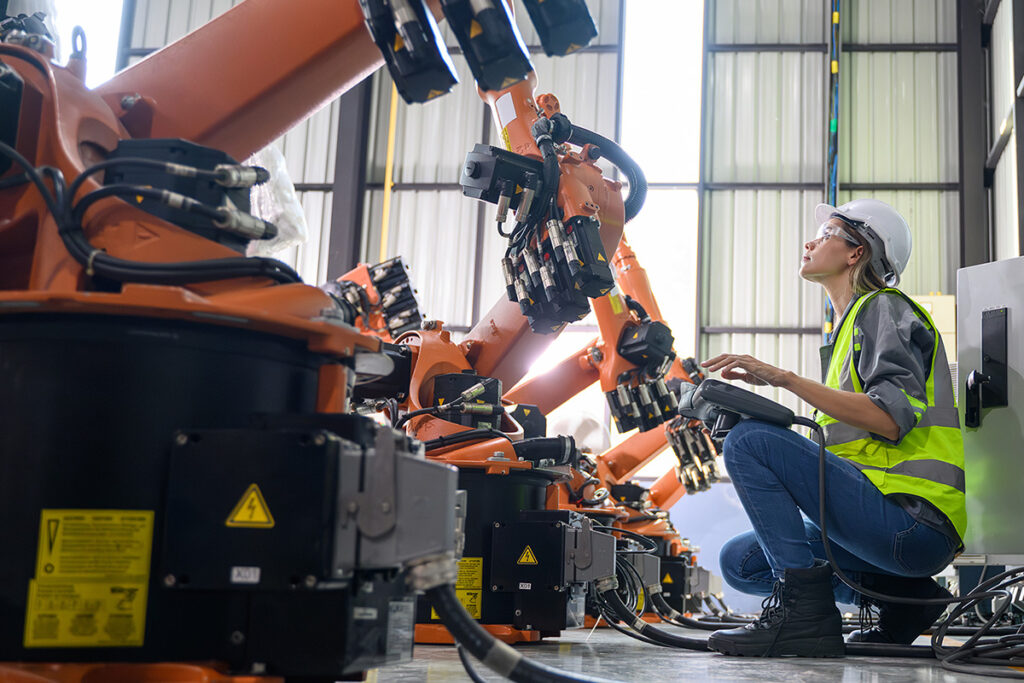Imagine how inspiring it is to be surrounded by over 2,000 professionals working to help people gain access to economic opportunity. I recently had the chance to attend the 40th annual National Association of Workforce Development Professionals (NAWDP) conference in San Antonio, Texas. Local leaders like Adrian Lopez, the CEO of Workforce Solutions Alamo, helped kick off the conference. As a Certified Workforce Development Professional, a credential conferred by NAWDP, I was excited to connect with workforce practitioners from across the US who are committed to learning from each other, exploring emerging trends, and celebrating collective achievements.
Here are a few key takeaways from my time at the conference.
How workforce systems adapt to emerging technologies will inform how we prepare individuals for careers in a world with rapid technological advances.
Automation and artificial intelligence (AI) are bound to come up at any workforce conference. In a session on the future of work and the coming paradigm shift, Heather Stafford, the Executive Director of the Oregon-based Rogue Workforce Partnership, highlighted the influence of automation and artificial intelligence on current and future jobs. She emphasized that automation will take any job it can, but humans can safeguard our careers and robot-proof our lives by cultivating innate qualities like intuition, imagination, and understanding. While robots and machines may have an upper hand with explicit knowledge (the kind that can be easily expressed, codified, and recorded), humans excel at tacit knowledge (more often acquired from personal experience). After all, a computer first beat a human at chess in the 1990s, but AI still can’t directly connect a person with a nonprofit professional providing wraparound support (yet!). Those referrals require a complex understanding of the interaction between individual circumstances, personal values, and other intangibles, all of which translates to the need for human involvement, at least for now. Heather ended the presentation with a story that envisions the workforce needs of the future, where robots and machines take over STEM (science, technology, engineering, and mathematics) work and demand grows for HECI (humanities, ethics, creativity, and imagination) professionals. Although that future can seem distant, it offers the promise of humans reclaiming time for artistic pursuits.
Human-centered strategic plans consider how the planning process and the resulting recommendations affect the constituencies they are meant to benefit.
We can all point to examples where well-intentioned actions had unintended consequences. For instance, presenters from the design firm People Rocket used the simple but powerful example of how a social media company’s introduction of the “like” button inadvertently exacerbated user echo chambers and contributed to political polarization. A human-centered strategic planning process, which prioritizes the end user throughout and includes regular checkpoints to assess potential impacts on diverse groups, can mitigate such risks. One practical way for workforce development professionals to consider the unintended consequences of a strategic plan is to make sure they measure what matters. It is common to track the number of people served in a program. It is much harder, but more meaningful, to track participants’ longer-term outcomes. Were they trained for an occupation or skill that will allow them to access a high-quality job (one that pays a living wage, has favorable working conditions, and has relatively low turnover)? Are there jobs available in the local area (or will they ultimately be forced to move away to translate their training into employment)? Are they employed six months or one year after getting a job related to their training? Centering workforce planning on the participants requires a deep understanding of both the needs of the worker and the composition of the local labor market.
Creative approaches that increase exposure to careers are critical to addressing an ongoing talent shortage in the skilled trades.
Interplay Learning led a session with workforce professionals from Southeast KANSASWORKS about cultivating exposure and job-ready outcomes in the trades. According to their analysis, 8,219 skilled trades students would need to graduate every day to address the talent shortages in the skilled trades. Interplay Learning allows for hands-on exploration and training in trades like HVAC, electrical, and plumbing with the use of immersive 3D and virtual reality simulations. Traditional trainings won’t be enough to meet the staggering demand in the skilled trades. Investing in innovative exposure and training approaches will help improve access and talent supply.
Workforce data analysis helps target workforce development efforts, such as those focused on middle-skill jobs, to maximize impact.
Workforce development professionals have been talking about the importance of middle-skill jobs (occupations that require more than a high school diploma but less than a four-year college degree) for a long time, and recent data continues to support the need for targeted workforce development efforts in this area. At NAWDP’s annual conference, Lightcast, a national provider of labor market data and analytics, presented top trends in the labor market. Since the COVID-19 pandemic, 2.7 million Americans have turned 25 years old. Within the civilian labor force, there are now 4.5 million more people ages 25 and older with at least a bachelor’s degree, 69,000 more with at most a high school diploma, and 1.2 million fewer with an associate’s or similar degree. Meanwhile, over 18 million jobs in the US typically require an associate’s degree, postsecondary nondegree award, or some college credits for entry. These numbers highlight the need for investments that target middle-skill jobs, and the data allows us to better understand opportunities for tailored workforce development approaches.
Always remember the why. Workforce development is hard work undertaken by dedicated professionals committed to collaborative learning and data-driven improvements. It’s not just about placing people in jobs. It’s about placing people in good jobs. It’s not just about placing people in their first jobs. It’s about helping people understand what their next jobs could be, too. At its core, workforce development is about making both individual people’s lives and their communities better.



